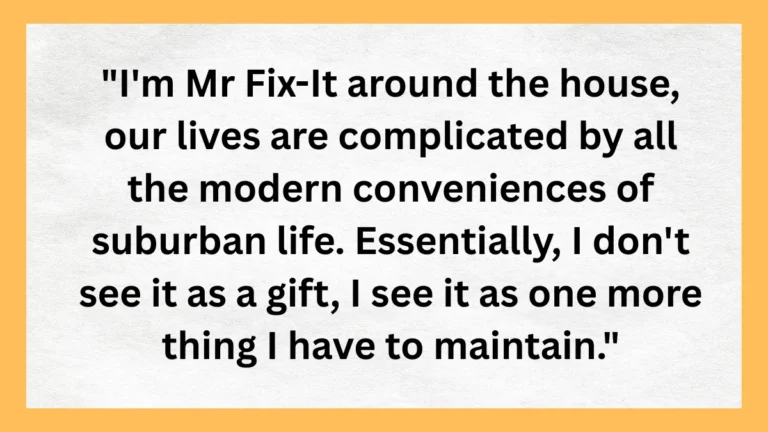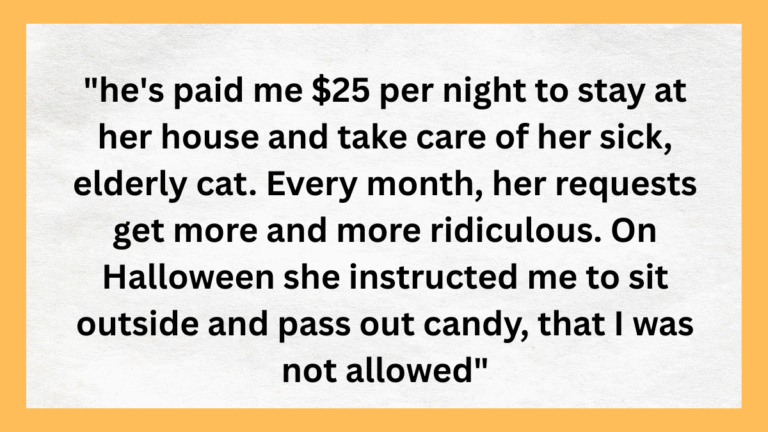When Bedroom Battles Begin: How One Family Is Navigating Space, Fairness, and Special Needs
In a cozy three-bedroom home shared by a family of five, finding the right bedroom setup is more than just a matter of space it’s about meeting emotional needs and maintaining harmony. With three children in the mix, things can get complicated, especially when two of them live with ADHD and ASD.
The current arrangement places the eldest daughter, 14, in the small box room. Her younger sister, 13, shares a room with their 10-year-old brother. Though the family plans to divide one of the larger rooms to give everyone more personal space, the eldest is refusing to move into the newly built section. For her, consistency and familiarity aren’t just preferences—they’re crucial for her well-being.
Tensions rise as the younger daughter claims she deserves the box room now, having shared it for years. Meanwhile, her older sister argues that her need for a familiar, regulated space should take priority. It’s a classic standoff between fairness and individual needs.
This situation underscores the emotional and logistical challenge of balancing equality with the unique requirements of neurodiverse children—especially in tight quarters where privacy and calm are scarce but desperately needed.
The teenage years come with their challenges, and this mother’s eldest daughter is determined to put that to the test.
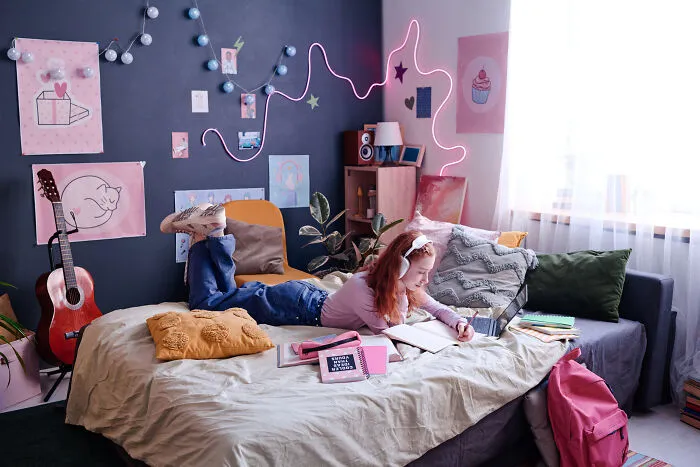
Her younger daughter and son have shared a room for the past two and a half years, but she’s now planning to rearrange the setup

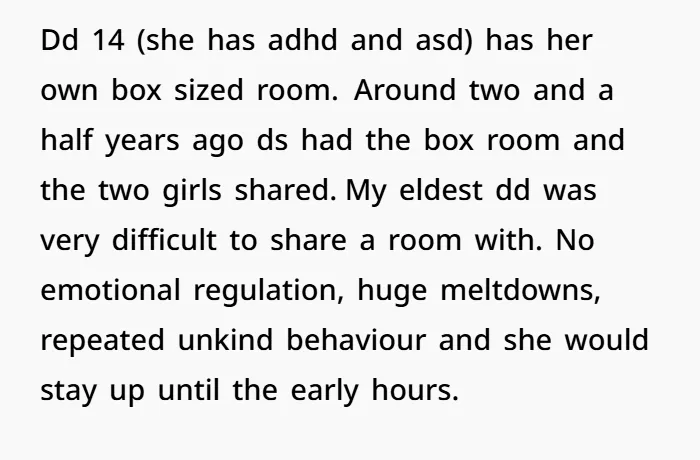
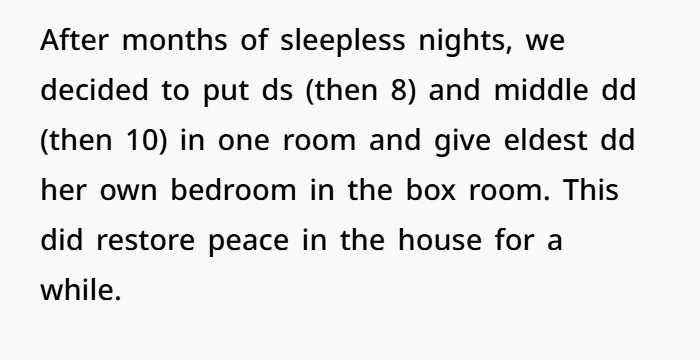

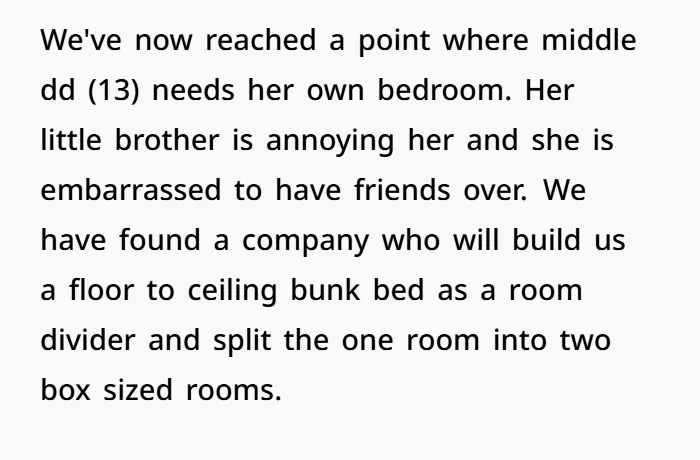
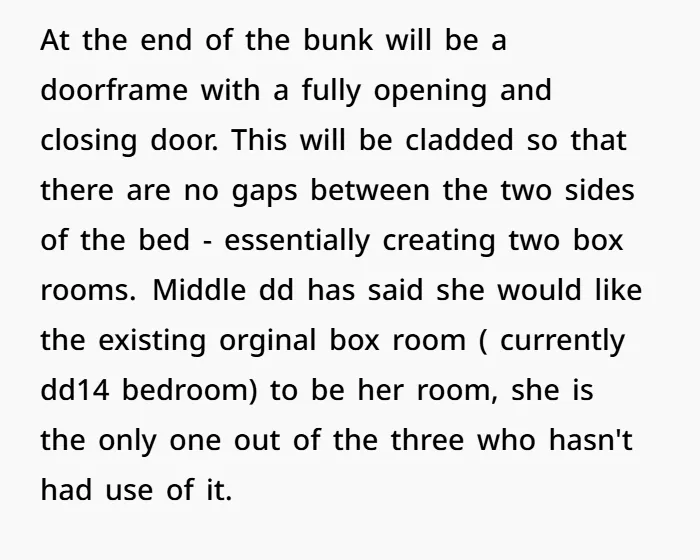
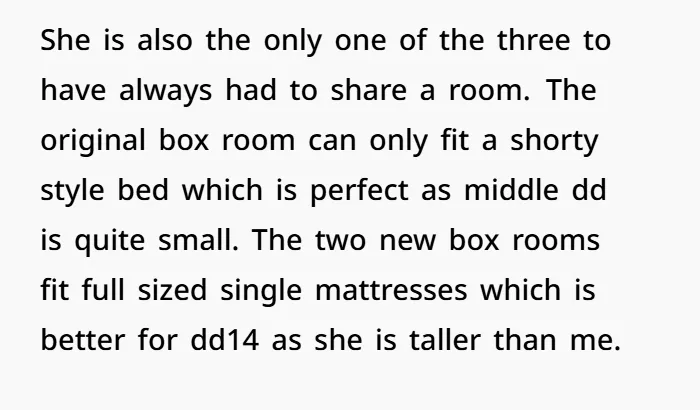

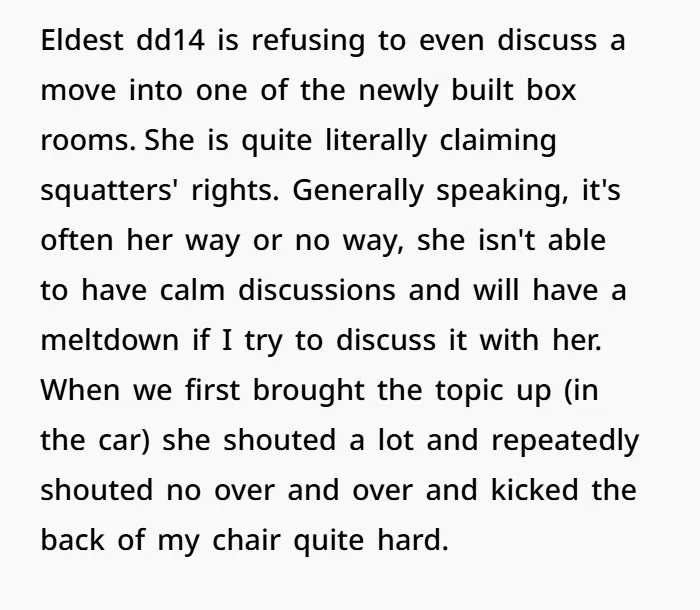

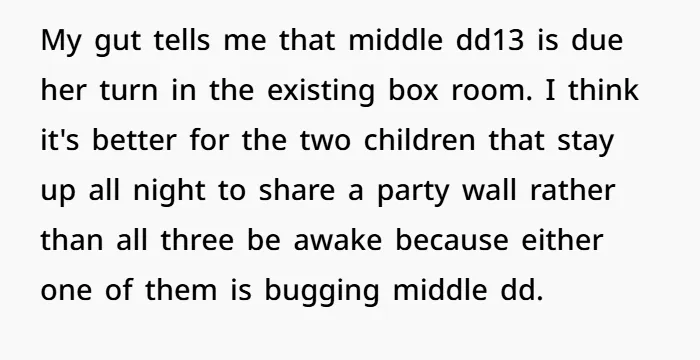

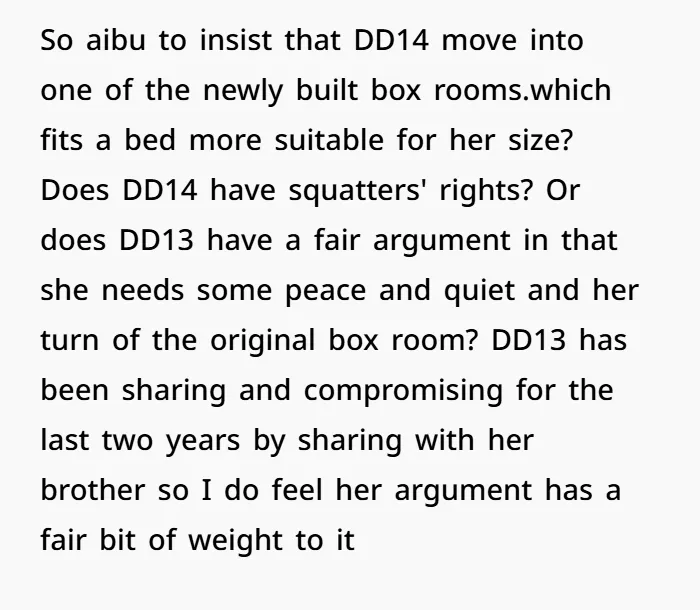
Navigating Fairness and Special Needs in Family Living Arrangements
Squatters’ Rights vs. Parental Decisions in the Home
When the eldest daughter jokingly invoked “squatters’ rights,” it sparked a debate that doesn’t quite hold legal weight. In reality, squatters’ rights known formally as adverse possession apply only when someone unlawfully occupies a property for an extended period while meeting strict legal criteria. Within a family home, bedroom assignments fall firmly under parental authority. It’s the parent’s responsibility to make decisions that support the well-being of all children even when that means one child may feel frustrated or displaced. Creating a balanced, functional home sometimes requires tough calls.
Meeting the Unique Needs of Neurodivergent and Neurotypical Kids
Caring for children with ADHD and ASD adds a unique layer of complexity to everyday decisions like room assignments. Both the eldest and youngest children in this family have been diagnosed with these conditions, and according to CDC guidelines, they thrive best in environments rooted in structure and predictability. Sudden changes can trigger emotional upheaval and behavioral challenges. Meanwhile, the middle child—who is neurotypical—has her own legitimate need for privacy and personal space after years of sharing a room. Striking a healthy balance means planning transitions carefully, ensuring each child’s emotional needs are respected, and fostering a home that works for everyone.
Rethinking Room Assignments with Practicality and Fairness in Mind
Creating two distinct spaces out of one room is a smart and practical way to ease household tensions—especially in a family where personal space is scarce. Giving the original box room to the middle daughter seems like a fair call. She’s made significant sacrifices—not just as the classic “middle child,” but as someone who thrives in clean, quiet environments and desperately needs a space to unwind. Meanwhile, the eldest would move into a larger, newly built room that better suits her physical needs and daily routines. Studies on household space planning emphasize how personalized room design can reduce family conflict and improve overall emotional well-being.
Helping Kids Adjust: Easing Resistance to Change
It’s no surprise that the eldest daughter pushed back against moving—older children often resist change when it threatens their sense of stability or control. But transitions don’t have to be traumatic. Here are a few child psychologist-approved strategies to make the process smoother:
- Ease Into It: Let her be part of the transition by choosing wall colors, bedding, or furniture placement.
- Focus on the Upside: Emphasize the perks of her new room—more space, better layout, or improved privacy.
- Use Visual Tools: Diagrams or visual schedules can help explain the move and reduce anxiety.
- Stick to the Routine: Preserve familiar daily rhythms to keep her grounded while everything else shifts.
Building Life Skills Through Compromise and Fairness
Parents of children with special needs often feel compelled to prioritize their unique challenges—and rightfully so. But focusing solely on one child’s needs can unintentionally foster a sense of entitlement that won’t serve them well in the real world. That’s why this moment becomes a valuable teaching opportunity. The eldest daughter is learning the art of compromise—navigating personal space and change while developing critical life skills like flexibility, empathy, and resilience.
Fairness doesn’t always mean equal treatment. It means recognizing what each child truly needs and creating an environment where everyone feels seen, supported, and prepared for life beyond the family home.



